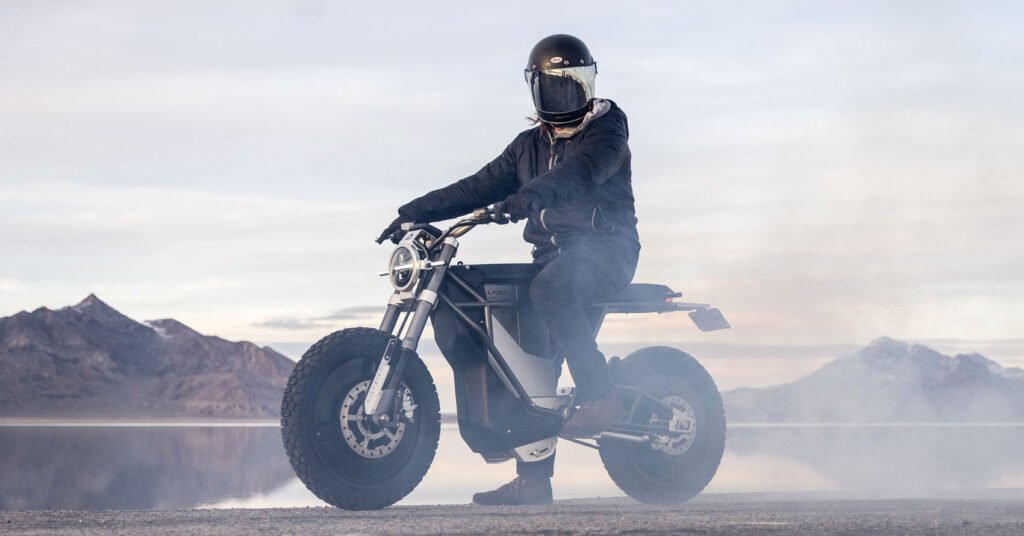Honda CB900F Bol d’Or
With Ian Falloon
While Honda initiated the revolution that saw the four-cylinder motorcycle predominate, by the mid-1970s, their single overhead camshaft CB750 was no longer king. In 1972 Kawasaki’s Z1 took over from Honda’s CB750, and soon Suzuki and Yamaha had double overhead camshaft fours. But these were all two-valve cylinder head designs and Honda, more than anyone, appreciated the advantage of four valves per cylinder.

Honda’s first four-valve racer was the RC142 125cc twin of 1959. At this time four-valves per cylinder were considered an anachronism by the European manufacturers who were constrained by tradition. The RC142 provided Honda with an impressive Isle of Man debut, but the 87 kg racer was still underpowered and lacked handling finesse.
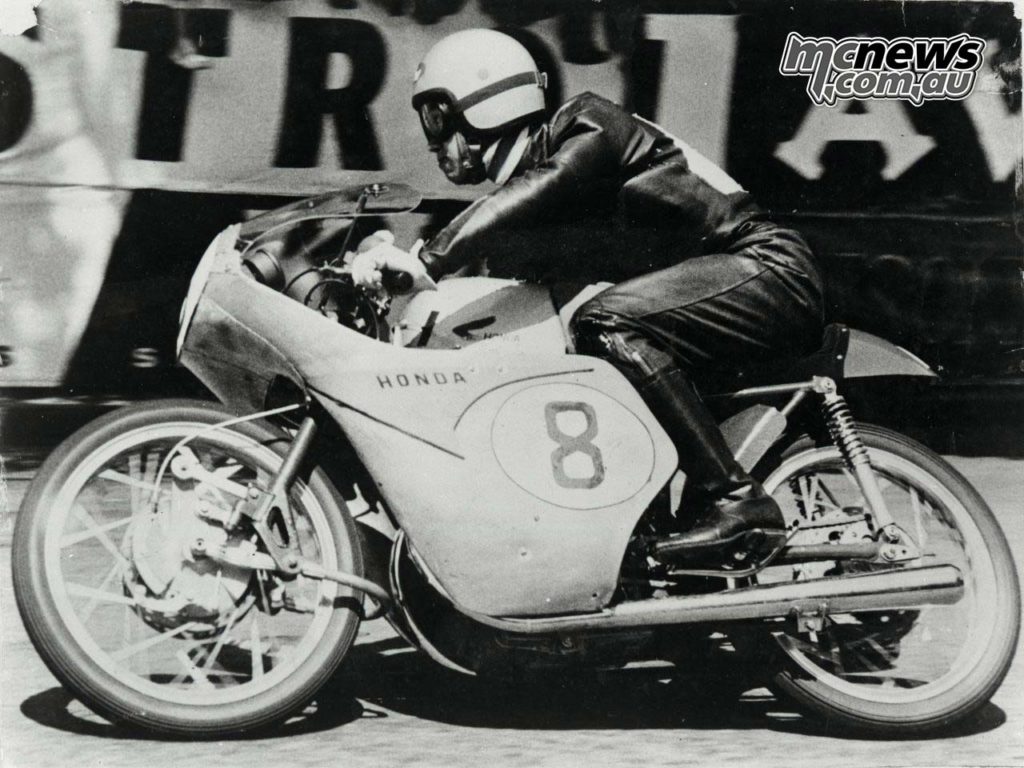
By 1961 the RC142 had evolved into the RC144 and Australian rider Tom Phillis provided Honda their first Grand Prix victory, and first World Championship. For 1962 Phillis was due to compete in 50, 125, and 250 classes, but took over Redman’s 350 cc RC171 for the Isle of Man Junior TT. He died on it at a crash at Laurel Bank, only two days after finishing third in the Lightweight TT.

Pairing two 125 twins created the RC161 inline four 250 and Honda was determined to win the 1961 250 cc World Championship. This year they produced the RC162, and it was the privateer Mike Hailwood who stole the glory from the factory riders by winning the world title.
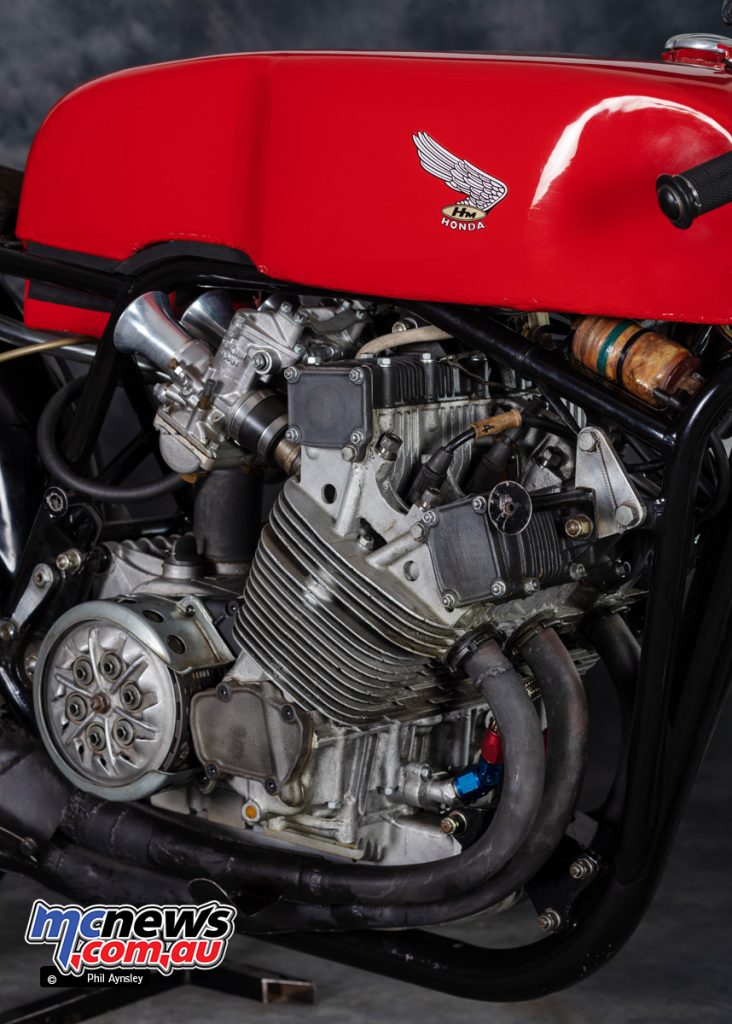
The ultimate four-cylinder Honda Grand Prix bike was the unwieldy 500cc RC181 of 1966 and 1967. Ridden by Mike Hailwood, even his brilliance couldn’t overcome the handling deficiencies of the 90 horsepower machine and it never won the World Championship.
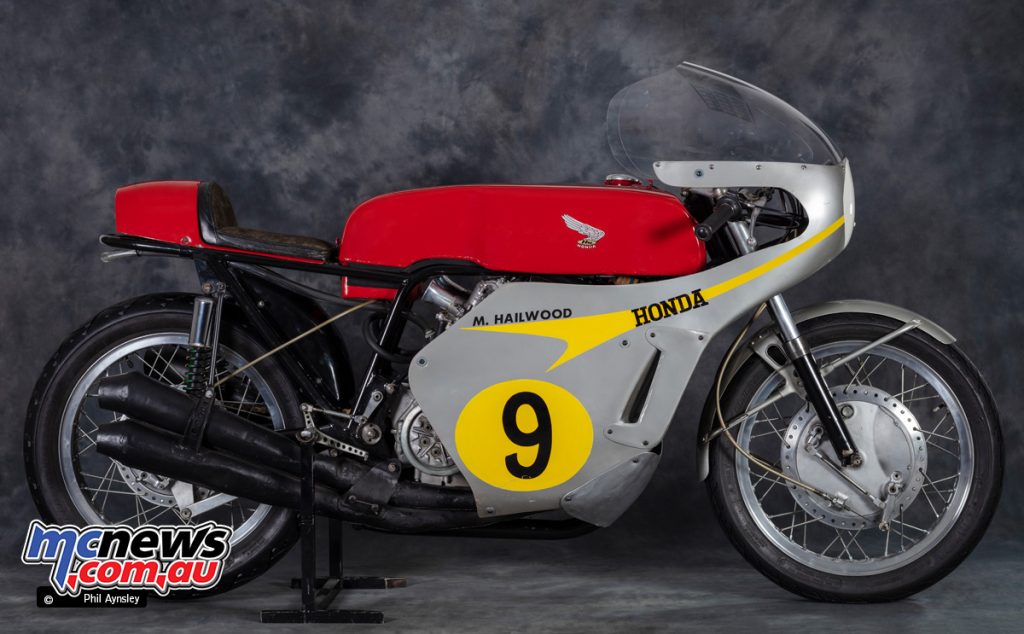
After an eight year hiatus Honda re-entered motorcycle competition in 1976 with the RCB endurance racer. This won the Bol d’Or and all other events this year, repeating this during 1977. The RCB’s success continued in 1978 and 1979, but for 1980 the regulations were changed so the all-conquering RCB was outlawed.
With such a successful history with four-valve cylinder heads it was only a matter of time before a four-valve head appeared on a Honda production bike.
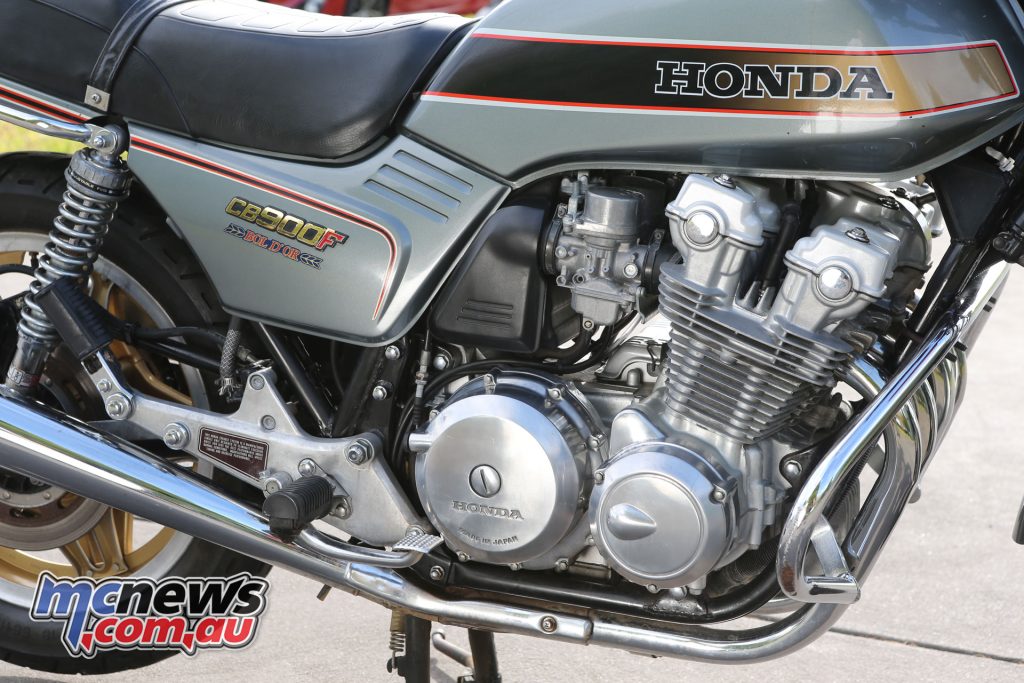
Honda’s first four-valve production engine was the spectacular six-cylinder CBX, but this was never going to be a volume seller. So for 1979 a new double overhead camshaft four-cylinder 900 replaced the single overhead camshaft CB750. Although the 900 capitalised on the success of the RCB in endurance racing, and was titled the Bol d’Or, there was very little in common between the CB750-based RCB and the new engines.
The new 900 four presented a change in direction from the previous evolutionary theme, sharing many design characteristics with the CBX 1000. In addition to double overhead camshafts and four valves per cylinder, the primary drive was by Hy-Vo chain, to a jackshaft that included the clutch and spring-loaded damper.

The alternator was on the right end of the five bearing forged crankshaft, with electronic ignition on the left. There were two cam chains, with a Hy-Vo chain connecting the crank with the exhaust camshaft, and a shorter chain driving the intake camshaft from the exhaust. Valve clearance adjustment was shim on top of the cam follower. The cylinder head featured a relatively wide, for a four-valve arrangement, 63° included valve angle.
As it was inherited from the 1960s Honda racers and not the more recent Cosworth automotive designs, this cylinder head layout was arguably obsolete by 1979 The 902 cc CB900FZ (64.5x69mm) featured a low compression ratio of 8.8:1, four 32 mm Keihin CV carburettors, and an oil cooler fitted to the front frame downtubes.
The power was 95 horsepower at 9,000 rpm, and this was a ballpark figure for 900 fours at the time. The only question everyone asked was why was it only 900 cc when Suzuki, Kawasaki, and Yamaha had full litre fours?

There was also little exceptional about the chassis, the double cradle steel frame including removable right side frame rails, but with more gusseting around the steering head than earlier 750s.
Weaknesses included nylon swingarm bushes, a front fork with skinny 35 mm tubes, and adjustable FVQ (Fade Very Quickly) rear shocks. Braking was by a pair of twin 280 mm front discs, and the wheels 19 and 18-inch aluminium Comstar. While not especially light, the CB900F weighed 233 kg, the performance of the new four was impressive.
The top speed was around 210 km/h, but without the individual personality of its CB750 predecessor the CB900F was considered a little bland. But for many the CB900F was the perfect “Universal Japanese Motorcycle,” the ubiquitous Japanese across-the-frame-four. Although blighted by the perennial Honda cam chain problem, these were steady, undistinguished motorcycles that improved gradually every year.

Updates for 1980 saw welcome needle roller swingarm bearings, and an air-assisted front fork. Further improvements for the 1981 CB900FB (shown here) included a larger diameter fork (37 mm), and dual piston brake calipers (from the racing CB1100R). Amongst the other 31 improvements this year were a stronger cam chain tensioner, and different valves.
Also available this year was the CB900F2B, with a 16-piece ABS three-quarter fairing and leg shields, housing a clock and voltmeter. Although the CB900F lasted until 1983, by now it was superseded by the larger CB1100F.

Where the CB900F excelled was as an everyday riding machine. Motorcycles were less specialised in the early 1980s and the Bol d’Or was forgiving, worked well as a high speed sportster, yet delivered the goods in the city or as a tourer. The suspension and riding position provided a great compromise between sports riding and comfort.
Factor in exceptional finish and reliability all for around three grand and you can see why the Bol d’Or was a success. It may have been bland but as a representative of the era of the universal motorcycle the Bol d’Or was one of the best.
Honda CB900F Bol d’Or Specifications
| 1981 Honda CB900F Bol d’Or Specifications | |
| Engine | Four stroke, transverse four cylinder, DOHC, 4 valve per cylinder. |
| Capacity | 901 cc |
| Bore x Stroke | 64.5 X 69 mm |
| Cooling System | Air cooled |
| Compression Ratio | 8.8:1 |
| Induction | Four 32 mm Keihin carburettors |
| Ignition | Inductive electronic |
| Starting | Electric |
| Max Power | 95 hp / 71 kW @ 9000 rpm |
| Max Torque | 77 Nm / 57 lb-ft @ 8000 rpm |
| Transmission | Five Speed |
| Final Drive | Chain |
| Frame | Steel twin downtube |
| Front Suspension | Telescopic air assisted fork |
| Front Wheel Travel | 160 mm |
| Rear Suspension | Swinging arm, dual shocks with adjustable damping |
| Rear Wheel Travel | 110 mm |
| Front Brakes | 2x 280mm discs |
| Rear Brakes | Single 297mm disc |
| Tyres | 3.25 x V19, 4.00 x V18 |
| Rake | 27 degrees 30 |
| Trail | 115 mm |
| Dimensions | Length 2240 mm Width 805 mm |
| Wheelbase | 1515 mm |
| Seat Height | 815 mm |
| Dry Weight | 233 kg |
| Wet Weight | 242 kg |
| Fuel Capacity | 20 Litres |
| Top Speed | 217.3 km/h |

